The Two Snakes: Who's the Real Hero of the Metal Gear Saga?
As the Metal Gear saga advances with another adventure starring its one-time villain, we're left wondering just who we're supposed to be cheering for, anyway.
This article first appeared on USgamer, a partner publication of VG247. Some content, such as this article, has been migrated to VG247 for posterity after USgamer's closure - but it has not been edited or further vetted by the VG247 team.
It all seemed so straightforward 25 years ago. Players took the role of an untested (yet somehow elite) soldier codenamed Solid Snake, crept into the military fortress Outer Heaven, and put a stop to the terrifying Metal Gear nuclear first-strike program – and in the process, he also took down his own commander, the treacherous Big Boss.
In the original Metal Gear, Big Boss was more caricature than character, like everyone else in the game. Designed to fit within the cramped confines of a tiny MSX/2 cartridge – a format whose maximum data capacity was many times smaller than the file size of any single image in this article – Metal Gear necessarily featured minimal plot and terse dialogue.
In fairness, that was quite a lot at the time. For a military action game designed in 1987, Metal Gear offered so much narrative it practically felt like an extravagance. Where most games of the era were doing well to goad you into action with a few sentences of backstory at the beginning, and maybe a terse CONGRATULATION upon completion, Metal Gear unleashed a comparatively byzantine story upon players. Snake's mission involved the sort of complications you'd expect from a role-playing game, not a shooter: He sought allies, made impromptu alliances with local resistance groups, rescued soldiers and civilians alike, and unraveled the mystery of the Metal Gear program as he went. He was every inch the brave detective.
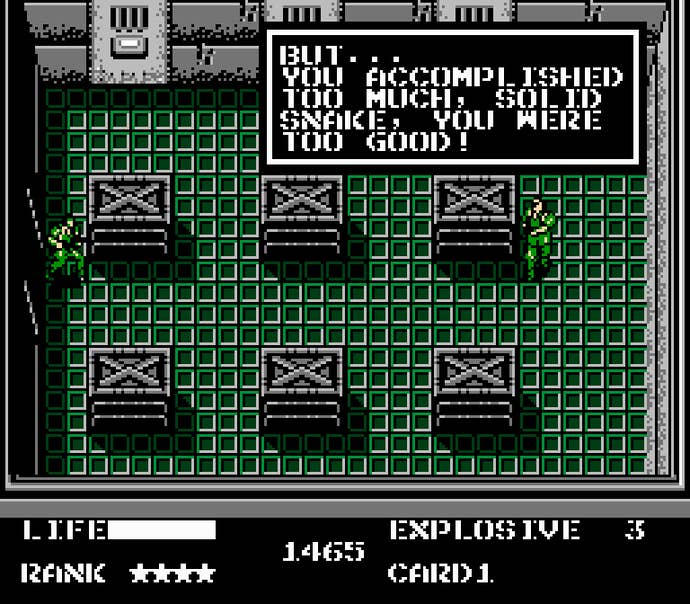
And Big Boss was every bit the plot-twisting villain. Initially presented as Snake's commander, Big Boss would call to relay advice to his subordinate via radio phone. The further you advanced into Outer Heaven, though, the more erratic Big Boss' help became. Eventually, he wasn't simply failing to offer key advice – he was actively misleading and discouraging Snake. By the time a rescued hostage revealed the truth of the situation – Big Boss was also the commander of the enemy forces and the mind behind both Outer Heaven and Metal Gear – it didn't exactly come as a surprise. Snake's mission required him to stop the Metal Gear battle mech itself, though the NES port of the game (that is, the version that came to America) cut this encounter entirely. The fateful shootout with Big Boss, however, remained present in both editions of the game. The showdown between soldier and traitor served as the true climax of the story, not the destruction of some mute robot.
Such was Big Boss' importance in the Metal Gear storyline that both the official and unofficial sequels – Metal Gear 2: Solid Snake for MSX/2 and Snake's Revenge for NES, respectively – brought the villain back for a second stint as the final boss, resurrected with the aid of cybernetic technology. Once again, Solid Snake gunned down his former commander to save the day. This time, though, Big Boss had more to say than the hammy cackling of the original game. He explained the rationale behind his madness to his former comrade before their final showdown, along with the lust for conflict that fueled his obsession with the Metal Gear plan:
"Once you've been on the battlefield, tasted the exhilaration, the tension... it all becomes part of you," Big Boss crowed. "Once you've awakened the warrior within... it never sleeps again... The only thing that satisfies your cravings... is WAR! All I've done is give you a place for it. I've given you a reason to live.

"Start a war, for its flames, create victims... Then save them, train them... And feed them back onto the battlefield. It's a perfectly logical system. In this world of ours, conflict never ends. And neither does our purpose... our raison d'etre. On the battlefield, you and I are valuable commodities."
Eventually, Snake managed to defeat Big Boss once and for all, using an improvised weapon to best the heavily armed older man and leave him for dead. And for the next two games – Metal Gear Solid and Metal Gear Solid 2: Sons of Liberty – Big Boss was nothing more than a spectre, a martyred warrior whose legacy loomed large over the events of those games, inspiring the villains and continuing to give Solid Snake something to fight against. At the same time, creator Hideo Kojima made a few important adjustments to Metal Gear Solid's backstory, retroactively rewriting the script of Snake's last battle with Big Boss. During their final encounter, he admitted to an ally, Big Boss revealed that he was no less than Solid Snake's father.
The truth was actually somewhat more ambiguous than that; as it turned out, Snake was part of a cloning program intended to create an army of perfect soldiers from the DNA of history's greatest warrior: Big Boss. Snake's initial skepticism at the revelation eventually withered once he met his twin "brother," his fellow clone (and the main villain of Metal Gear Solid), Liquid Snake. (No, names are not Kojima's strong point.) Liquid had hijacked a modernized version of Metal Gear in order to realize his so-called father's "dream" of creating a mercenary state called Outer Heaven, which he intended to populate with soldiers who had been enhanced with Big Boss's DNA. One big family: The Sons of Big Boss.
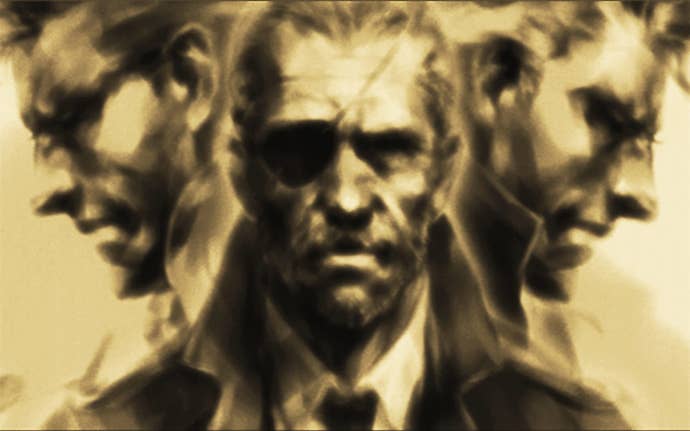
Although it may not have been evident at the time, Metal Gear Solid's retconning of Snake's relationship with Big Boss radically changed the nature of the series' ongoing storyline and character development. The rewriting of the narrative was not in itself necessarily a bad thing – Metal Gear Solid's script was enormous compared to its predecessor's, and it's not as though many people had actually played Metal Gear 2 at that point, released as it was in an unpopular genre on an aging computer platform few people owned. Kojima simply fleshed out a scenario that only a handful of die-hard fans had personally experienced – a perfectly reasonable move as he escalated the saga to a more sophisticated format for a larger audience.
The real impact of the plot change reflected in the characters themselves. It changed the nature of Solid Snake; where once he appeared to be a virtuous soldier fighting to prevent global carnage, he now became simply a solider, fighting. Big Boss' taunts at the end of Metal Gear 2 – his boasts that he had created a world for a Snake, giving him a reason to live – took on a new, darker meaning. Snake's dialogue lent weight to this new interpretation, revealing a cynical and even self-loathing man who enjoyed few friends and few pleasures.
Furthermore, aside from the reverent Mei Ling and the loyal Otacon, those around Snake held him in equal contempt. They regarded him as either a mindless tool to be exploited, a murderer, a sociopath, or all the above. Mass-murdering mind-reader Psycho Mantis took solace as he died in his realization that compared to the darkness in Snake's mind, he himself was "not so bad." Even Snake's "brother" saw him only as a means to gain access to Metal Gear's launch codes through manipulation. Meanwhile, mission planner Naomi Hunter thought only of killing him for the sake of revenge. Snake became a tragic figure, a broken man, but not a particularly heroic or sympathetic one.
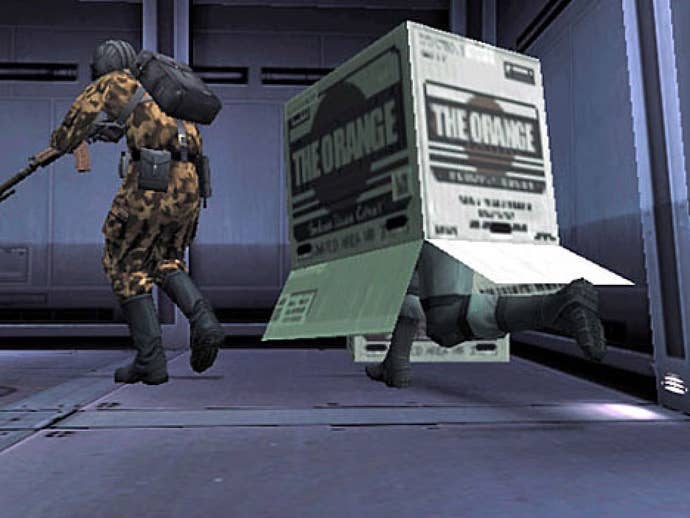
Metal Gear Solid 2's treatment of Snake would seem to contradict this at first glance. After the prologue, players saw Snake only from an outsider's perspective, that of novice agent Raiden. From Raiden's point of view, Snake seemed impossibly cool, unflappable in the face of combat, operating with a much deeper awareness of the game's events than Raiden himself was allowed.
Yet Kojima intended MGS2, on many levels, as a deconstruction of its predecessor, and the game's presentation of Snake would seem to fit that definition. If Raiden was meant to stand in as an avatar for the player, then Raiden's awestruck hero-worship of Snake would mirror the Metal Gear fanbase's reverence for the series' lead character. At the same time, though, the player knows more about the situation than Raiden; while the character wonders aloud about this "Plissken" guy who shows up unexpectedly, the player knows it's Snake. When "Plissken" makes self-deprecating remarks about his supposed heroism, we'd already heard the same comments (and many others) in Metal Gear Solid. When "Plissken" goes ballistic on the terrorist masquerading as Solid Snake, we know it's because he's the real Snake and the terrorist's clone-brother, so we understand why he has an axe to grind.
Kojima has given pragmatic reasons for presenting MGS2 through Raiden's eyes. "At the end of Metal Gear Solid 1, Snake becomes this legendary hero," he's said. "It just didn’t make sense to have this ‘legendary hero’ start from scratch, with players getting all these codec calls telling this hero how to perform basic actions." Be that as it may, a side effect of that design choice means that MGS2 was also the point at which Metal Gear began disassociating itself from its main character.
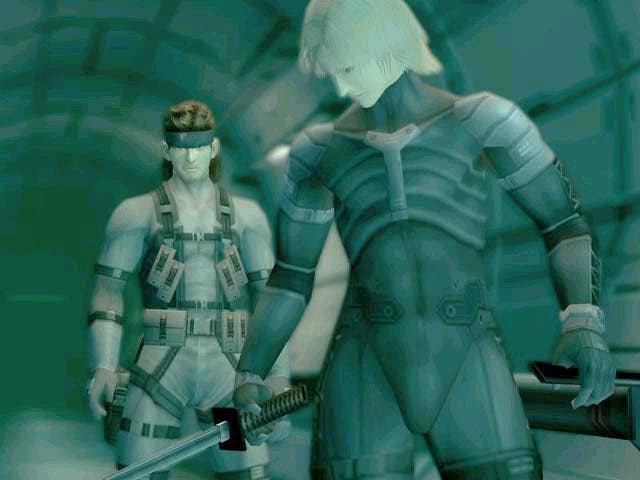
Where the first three chapters of the series saw players working with Snake against long odds and evil conspiracies, MGS2 turned him into an unreliable ally at best. Now Snake was the one withholding secrets from the player, the one on the inside. Snake eventually betrayed Raiden and left him to be tortured – and though this turned out to be a ruse, it nevertheless reinforced the separation between and the player and Snake even as it dismantled the entire notion that Snake and Metal Gear were analogous concepts.
At the end of MGS2, Raiden symbolically took up a sword and completed the story's final sequences wielding a blade – a weapon Snake verbally disparaged. It was only then that Raiden properly distinguished himself from his predecessor. And, by association, so too was the player distanced from Snake. We could watch Snake fight side-by-side with Raiden, but we couldn't be Snake anymore. On the contrary, Snake had no compunctions about lashing out against Raiden with physical attacks if you played unproductively. Snake's big speech at the end of MGS2, exhorting Raiden – and, by proxy, the player – to forge his own identity seems on some level to be a message to fans to let go of Snake.
Not that Kojima offered much choice. The next entry in the series, Metal Gear Solid 3: Snake Eater, abandoned Solid Snake altogether. Despite the "Solid" there in the title, MGS3 turned the clock back on the series' timeline by half a century to explore the actions of Snake's "father," Big Boss, in the days before he had become a cackling paper-thin bad guy. Despite looking at sounding exactly the same as his genetic progeny, Big Boss – here code-named Naked Snake, or simply "Jack" – reads as an entirely different character. He was more vulnerable, more fallible.
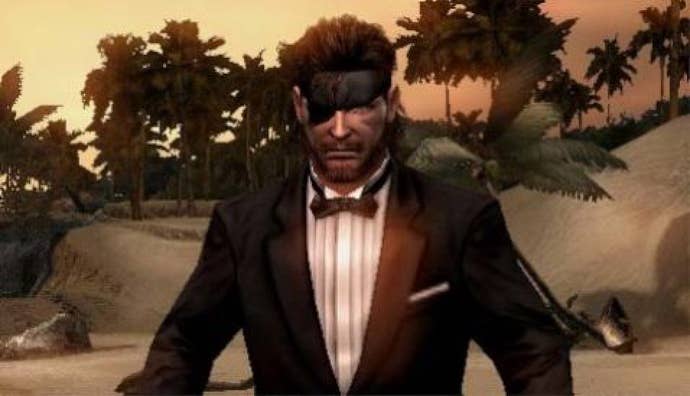
"You have to keep in mind that Solid Snake is not a real human," Kojima stated at a press conference last summer. "On the other hand, Big Boss is a real human being with true emotions. He can be more expressive than Solid Snake. So yes, as a result I find him more compelling to write."
That favoritism came across clearly in MGS3. The younger version of Big Boss had his own obsessions (don't ask him about handguns), was more likely to dabble in small talk about pop culture, and made far more dumb mistakes than Solid Snake. Perhaps most importantly of all, he had much deeper emotional connections to those around him, particularly his own mentor, the stoic veteran known as The Boss. The two characters' relationship was never entirely explained – not quite mother/son, not quite former lovers – but it clearly had a deep-seated nature, and the pain of The Boss' seeming betrayal of her nation and principles gave MGS3's story a far more personal tone than had been seen in the series before. Where Solid Snake was all business – he aimed to stop Metal Gear because those were his orders – Jack was motivated more than anything else by a desire to understand how his mentor could turn his back on all she had taught him.
Fittingly, MGS3 offered the most powerful and emotional outcome in the entire series as Jack was forced to kill a woman he clearly loved for the sake of their shared ideals. While MGS3 wallowed in narrative references to the series' later chronology – the Philosophers, the Patriots, a prototype of the Metal Gear device itself – it was the revelation of The Boss' underlying motives and what it revealed about the callous nature of government that became the true inflection point for the Metal Gear storyline. Realizing he had been betrayed not by his mentor but rather by his country, Jack shed his naivety and began a hidden war to create a world where the sacrifice of soldiers would be respected and honored.
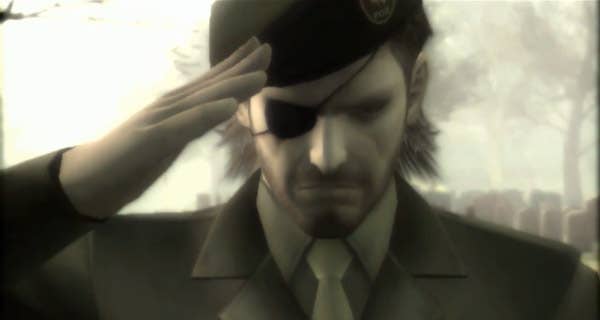
Were that the extent of Jack's story, you could easily draw a line between Jack's silent resentment as he saluted The Boss' grave and his dramatic speech at the end of Metal Gear 2. Despite all the changes to the series over the years, he remained true to the spirit of his battlefield soliloquy from Metal Gear 2. But Kojima had clearly become quite enamored of writing the former villain and brought him back through narrative magic for a final bit of elocution at the end of Metal Gear Solid 4. Though MGS4 again turned the spotlight back to Solid Snake, it systematically dismantled the character. His cloned body had aged too rapidly, leaving him an aching, prematurely old man, dying before his time. And yet Snake seemed inexplicably apathetic about the whole situation, shrugging off his imminent death as practically immaterial. MGS4 has an impossibly arcane plot, but as a story it's really about Snake wrapping up loose ends before he dies. And in the end, the poor guy didn't even get the girl; former love interest Meryl Silverburg ended up marrying the running poop joke that was Johnny Sasake.
The new final meeting between the two Snakes demonstrated the shift in Kojima's sympathies. Solid Snake looked old and weary; Big Boss, despite being much older and presumed dead a couple of times at Snake's hands, seemed bold and healthy. Where their previous encounter had seen Snake eke a victory despite being unarmed, here Big Boss effortlessly disarmed his "son" and gained the upper hand. MGS4 was meant to be Snake's final tale, but in the end Big Boss stole the spotlight and put a bow on the saga in his own words. Big Boss called the shots for his own life as well, choosing the time and place of his own death; Snake, on the other hand, couldn't work up the conviction to shoot himself despite his wounds and physical agony that guaranteed a short, miserable final few months of life. In the end, Big Boss became less of a villain than a hero who went astray, and even in his final moments of life he won a victory by mentoring Snake, giving his unwanted "son" the conviction to live out the remainder of his own life on his own terms.
Snake's tale truly has ended, but Kojima continues to explore Big Boss' younger days. Peace Walker explored the direct outcome of MGS3, and both Ground Zeroes and The Phantom Pain promise to bring the disconnected events of the older points in the timeline into the main saga. Kojima has really been pushing the concept of Big Boss as wounded soul, going so far as to change his code name for the upcoming adventures to "Punished Snake." Metal Gear may have started out as Solid Snake's story, but over time it's clearly warped into a study of Big Boss and his fall from grace.
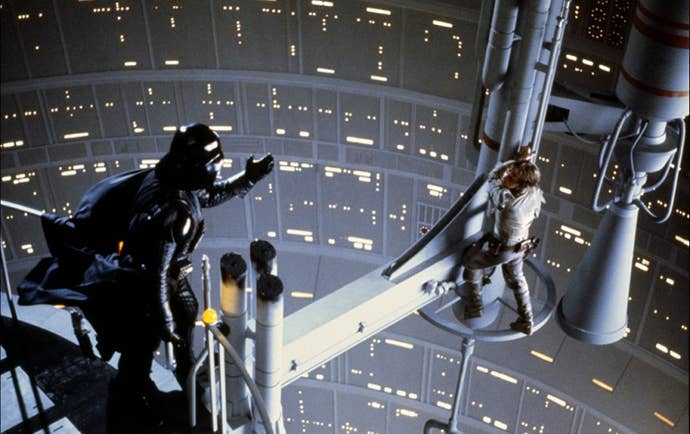
Maybe the change was inevitable the moment Kojima retconned Big Boss to be Snake's father. The man's obsession with Hollywood is hardly a secret, and the retroactive uplifting of a former villain seems like a direct parallel to George Lucas' treatment of Darth Vader. Once the one-note bad guy was revealed to have a direct connection to the saga's protagonist, suddenly the question of how he became so evil came into play. And a narrative arc of heroism, disgrace, and redemption is admittedly far more dramatic than the tale of a guy who's heroic from start to finish. On top of that, Solid Snake and Luke Skywalker wouldn't even have tales to tell if not for the misdeeds of their fathers.
To Kojima's credit, the Metal Gear prequels have, to date, been generally stronger than the later entries in the timeline – something you definitely can't say for Star Wars. It likely helps that he seems to understand the dangers inherent in over-explaining the connections between the chapters of the series. As he said at Tokyo Game Show last year, "I believe that [the story] I'm creating is like a series of dots. One dot here, one dot there. The ones who draw the lines between those dots are the players. They're the ones that fill in the gaps. So I don't quite have an idea of how to fill in those spaces and draw the whole circle around. But rather, I'd like to have the fans connect those dots."
I'm interested to see how well Kojima's able to uphold that philosophy as The Phantom Pain brings the Metal Gear saga back near to where it started, chronologically. With the events of that game slated to take place just a decade before the Outer Heaven incident of the original Metal Gear, will he resist the temptation to wrap everything too neatly? Furthermore, it seems almost inevitable that Phantom Pain will feature a young Solid Snake in some capacity. The question is, will Metal Gear reaffirm Snake as its true protagonist, or will Big Boss continue to dominate the show?
Or does it even matter? Given all that Metal Gear has given up of its unique character in order for The Phantom Pain to better fit the tidy template of contemporary big-budget action games, maybe the outcome of its unique characters has become immaterial as well. Nevertheless, the part of me that's been following this storyline since the 8-bit days, when Big Boss was a nonsensical bad guy with no motives besides "power" and "evil," can't help but take some foggy interest in seeing where it all ends up. After all, like Big Boss, it's our sentimental foibles that make us as individuals so much more lovable than those emotionless global publishing corporations.
